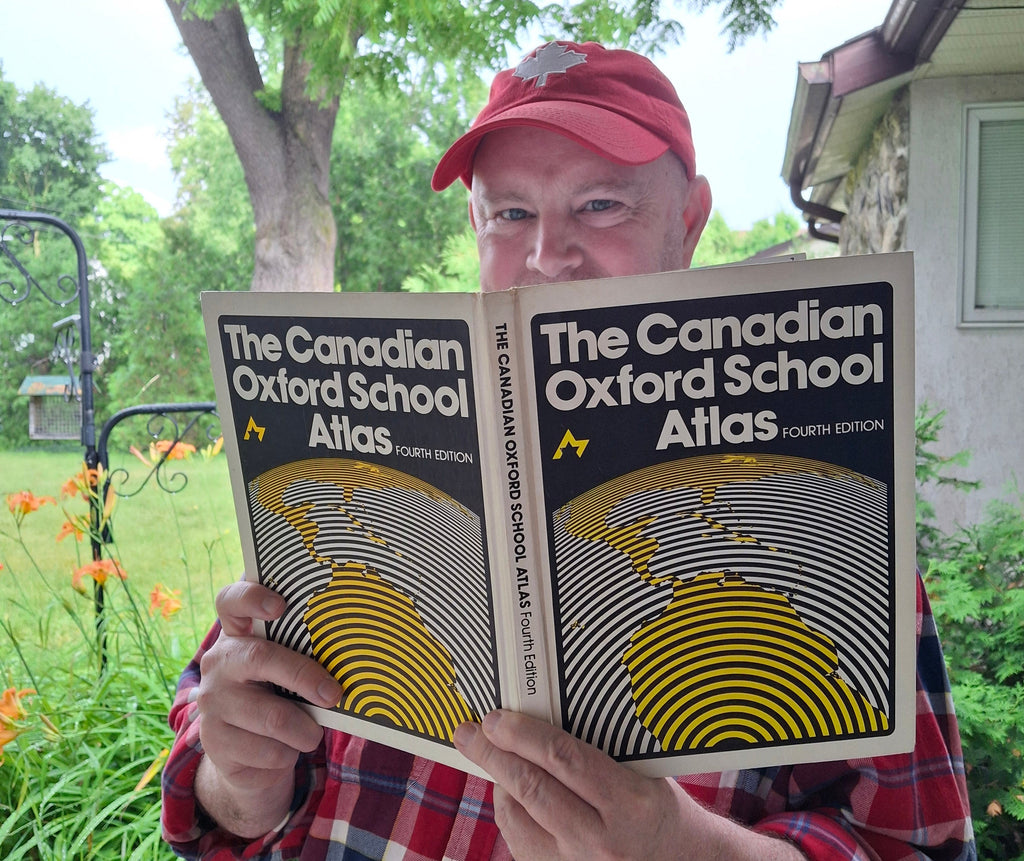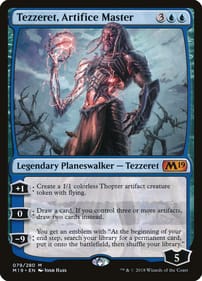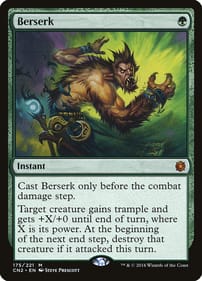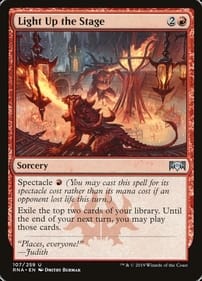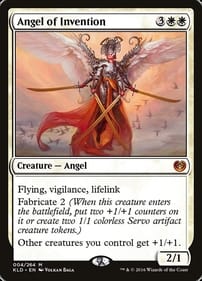What I read on my Christmas break
By Dan Brown I’m one of the lucky ones who got some days off at Christmas. It won’t surprise you to learn I spent much of my time away from work reading graphic novels. Here’s the rundown on the books I finished while going through my TBR pile. Ginseng Roots by Craig Thompson: You may know Thompson as the American comic creator behind the landmark book Blankets, in which he chronicled his turning away from religion as a teen. In this new volume, published last year, he again covers his youth, but this time he uses his childhood jobs on Wisconsin farms as the launching point for telling the story of ginseng. I will be honest with you, I wondered how the writer/artist would be able to fill 448 pages with details about a single plant. That didn’t sound like a workable premise to me. Surprisingly, he pulls it off wonderfully. I found the thick graphic novel engrossing. His lines are lush and this is the kind of book that reviewers call “expansive.” His scope is wide – really, it’s not about farming, it’s about life. Thompson is clearly at the peak of his storytelling powers. Drinking at the Movies by Julia Wertz: New York cartoonist Wertz relates how she came to live in the Big Apple after leaving her childhood home in San Francisco. Her autobiographical mini-stories revolve around Wertz’s struggle to understand her own motivations as she enters young adulthood. If Mimi Pond is among the comic creators you enjoy, you should check this one out. Based on this collection of Wertz’s strips, I plan to read more of her comics. Various by Jeff Lemire: I’ve been meaning to do a deep dive on the Southwestern Ontario creator, and finally got a chance over the holidays. I read stuff he wrote and drew himself (Fishflies, Minor Arcana Volume One) as well as titles on which he wrote and collaborated with another artist (Plutona, Primordial, Phantom Road Volume One). I would say the highlights for me were Plutona and Phantom Road. The former is about a group of school kids finding the body of a superhero (shades of the movie Stand By Me), the latter about a long-haul trucker who is transported to an alternate dimension where zombie-type monsters roam the landscape. As always, I don’t recommend Lemire for those who want pat explanations like you might get in a mainstream Marvel or DC comic. He likes to keep things mysterious for his readers. Ashes by Alvaro Ortiz: This thin volume is akin to a road movie in which a group of friends reunites after many years to carry out the wishes of a departed buddy who has been cremated. It has a fairy-tale quality to it, and I enjoyed the sweet ending. DC: The New Frontier by Darwyn Cooke: This Compact Edition, featuring almost all of DC’s roster , didn’t move the needle for me. I think that’s because I don’t know enough about the DC universe to understand the significance of how its heroes behave here. It seemed derivative of previous comics, such as Frank Miller’s Dark Knight Returns, and borrowed elements from movies like 2001: A Space Odyssey. What can I say? I grew up a Marvel fan. Batman: The Long Halloween by Jeph Loeb and Tim Sale: I understand this book is much loved by DC fans. The art is evocative, and it was a cool take on the origin of Two Face. Again, I read the Compact Edition. Did you get any time to read over the holidays? Did you get any graphic novels as gifts? I would love to hear about it in the comments! Dan Brown has covered pop culture for more than 33 years as a journalist and also moderates L.A. Mood’s monthly graphic-novel group.
Graphic-novel Gift Guide
By Dan Brown I love giving (and getting) graphic novels and comics at Christmas! As you’re shopping for family and friends this festive season, I’ve got some suggestions on which books to get the different people who made your list. Check it out! For the newbie graphic-novel reader: I would recommend a starter pack of Watchmen, The Dark Knight Returns and Maus. Released at roughly the same moment in the 1980s, these are the foundational graphic novels – along with Will Eisner’s A Contract With God – that showed comics could be taken seriously. For the superhero fan: I would give this person Irredeemable from Boom! Studios. Written by Mark Waid, it takes a look at what happens when an all-powerful hero in the mold of Superman goes off the rails. For the fan of Canadiana: Maurice Vellekoop’s I’m So Glad We Had This Time Together is a gay coming-of-age story set in Toronto and includes a lot of history about the queer community in the Big Smoke. There’s also Kate Beaton’s Ducks: Two Years in the Oil Sands, set in Alberta’s Oil Patch. For the fan of local talent: Derek Laufman has books like Bot 9 and The Witch of Wickerson for kids, plus titles such as Crimson Fall: The Shore Tower for mature readers. He recently published the first issue of The Rats of Ironwood and has taken over art duties on Skottie Young’s I Hate Fairyland series. A Byron resident, Laufman is as local (and as good a creator) as it gets. For the fan of overlooked gems: Get this person on your list anything Mouse Guard, Londoner Bryan Lee O’Malley’s Seconds, or Southwestern Ontario native Jeff Lemire’s The Nobody, the latter of the three being a re-telling of the H.G. Wells novel The Invisible Man in a small town. For the history buff: Maybe I’m in the minority, but I had not heard of Eadweard Muybridge, the pioneering photographer who was also involved in one of the most notorious murder trials of the 1800s, until Quebec graphic novelist Guy Delisle published this biography. A fascinating character whose story is told in a fascinating way. You could also try Scott Chanter’s Two Generals, about the D-Day invasion told from the perspective of two Canadian grunts. For the political buff: Are You Willing to Die for the Cause? is the first of a two-volume history of the FLQ, the separatist terrorists who are portrayed by veteran cartoonist Chris Oliveros as a bunch of stumblebums. For the art lover: I came relatively late to Dean Motter’s Mister X. Check out Mister X: The Archives or Mister X: The Modern Age, with its glorious retro look, billed as “a fusion of film noir, Art Deco and German Expressionism.” All of those elements combine to make a comic that will live in your imagination for a long time. And Los Bros Hernandez worked on some of the early issues of this Canadian classic! For the lover of the printed word: Anything, really, by Hamilton’s Joe Ollmann. If you want a starting point, try some of his short graphica, for instance Happy Stories About Well-Adjusted People. If you like what you read, move on to Fictional Father and The Abominable Mr. Seabrook. Don’t get me wrong, I love Joe’s art, too, but there are few comic creators whose voice comes through as clearly as Ollmann’s does. For the one who loved this summer’s Superman movies: The James Gunn film was based on a number of storylines, including All-Star Superman, Superman For All Seasons and Superman: Birthright. If you can find a compilation of John Byrne’s 1980s run on Superman, this person on your list will likely enjoy that one, too. For the one who loved The Fantastic Four: First Steps this summer: The Essential Fantastic Four Volumes 1-5 were the source material for this movie, with its retro-futuristic look. The new motion picture was dedicated to artist Jack Kirby, and these five volumes contain his entire influential run on the title with Stan Lee. For the one who is looking forward to Avengers: Doomsday next year: See my Fantastic Four recommendations. Also the Essential Super-Villain Team-Up Volume 1 and the individual issue The Invincible Iron Man No. 150 – in which Doctor Doom faces off against Iron Man. For the music fan: Scott Chantler’s Bix, Rush: The Making of a Farewell to Kings and David Collier’s Topp: Promoter Gary Topp Brought us the World. For the person who’s impossible to buy for: Why, a gift certificate, of course! So that’s it for my suggestions for this year. Are there any graphic novels/comics you are giving this year, or hoping to see under the tree? Let me know in the comments! Dan Brown has covered pop culture for more than 32 years as a journalist and also moderates L.A. Mood’s monthly graphic-novel group.
Find Inspiration in Lemire Memoir
By Dan Brown If you cried at the climax of Jeff Lemire’s Sweet Tooth series back in 2013, then 10,000 Ink Stains will be a treat for you. Fans of Southwestern Ontario native Lemire will love this newly released memoir, which covers the artist/writer’s first 25 years in the comic industry, from the time he was a kid to his days breaking into the business until now, when he has his own large following. It will be of secondary interest to DC and Marvel readers looking to get a glimpse into behind-the-scenes machinations at those companies from roughly 2010 to 2017. Lemire’s focus here is on the graphic novels and comics he has drawn and written himself. He follows a chronological structure, walking the reader through each stage of his evolution as a comic creator, giving the reader insights into his creative process, and fitting each book or series into the larger context of his career and life. So if you’re a fan of works such as Sweet Tooth, Essex County, the Underwater Welder, Trillium, Secret Path, Black Hammer and Royal City, you should check this one out. You’ll get Lemire’s creative thought process, details about how he achieved the look of each one, and his personal reaction to the public’s reaction. “Comics is such a deeply personal medium,” Lemire writes, meaning he doesn’t want to speak for any other creator. He also freely admits his scratchy drawing style is not everyone’s cup of tea – he made peace with that reality long ago. He also freely shares credit for his success with the people who helped him along the way, like how Chris Staros at Top Shelf was the one who took Lemire under his wing and coached him on storytelling during the making of Essex County, the book which garnered Lemire so much attention at the outset of his career. What may come as a surprise is when Lemire reveals how badly he suffered from anxiety and depression earlier in his life, which – until he found a medication that worked for him – he treated with drinking and chain-smoking. “I am a fairly private person,” he explains. The great part is how Lemire is an example of the school of thought that says no experience is wasted. Again and again, he shows how his failures led directly to his greatest successes as a cartoonist. Lemire has never really discarded an idea – if it doesn’t work for his current projects, he’ll file it away in the back of his mind, where it has a good chance of becoming the germ of his next book or comic series. His story is inspiring for that reason. What you won’t find here is a lot of gossip about the Big Two comic giants, DC and Marvel. But Lemire does talk about how he learned more about himself, his preferences, and his process by taking on assignments from the Coke and Pepsi of the comic industry. Ultimately, Lemire concludes that working on company-owned characters isn’t his favourite thing. He had to settle for having his own “weird little pocket of the DC Universe for a couple of years.” (One of the points that does come through is, if you thought DC’s New 52 marketing blitz was a chaotic mess when it launched, it was the same behind the scenes.) His eventual answer was to create the Black Hammer comic universe, a playground of his own making where he can scratch virtually any creative itch. Lemire doesn’t write extensively on his secret to being prolific, by taking the work ethic he learned growing up on the family farm in Woodslee, east of Windsor, and applying it to comics – to the point some consider him the modern equivalent of Jack Kirby. He also glosses over the book A.D. After Death, his 2017 collaboration with Scott Snyder, which I thought was an interesting omission. At the conclusion of 10,000 Ink Stains Lemire urges readers, if they like reading comics, to try making one of their own. We can only hope there is a young person out there with a creative spark who takes his advice seriously, because the world would be better for it. Dan Brown has covered pop culture for more than 32 years as a journalist and also moderates L.A. Mood’s monthly graphic-novel group.
Take A Graphic Trip Across Canada
By Dan Brown In honour of our national holiday, and as a way to protest the tariffs from our southern neighbours, many Canadians are travelling in their own backyard this summer. But what if you aren’t in a position to make the trek? Then take a trip across Canada – in graphic-novel form. That’s right, you can go from coast to coast to coast by reading the work produced by our dominion’s many talented comic creators. So here are suggestions for how to acquaint yourself with the regions of this great nation by looking through the comics set in those places. The East Coast: No trip to the Maritimes would be complete without a shipwreck, so let’s start our journey with Call Me Bill by London graphic novelist Lynette Richards. It’s a mystery, it’s an adventure story, it’s a reclaiming of an LGBTQ figure from the past – and it all begins with a maritime disaster off Nova Scotia, where Beal Art grad Richards lives in Terence Bay. I also recommend D.Boyd’s Denniveniquity and Chicken Rising, which cover Boyd’s formative years in Saint John, which is the city in New Brunswick – the one in Newfoundland and Labrador is St. John’s. Got it? La Belle Province: My first suggestion is Michel Rabagliati’s Paul Up North, part of which takes place during a snowstorm in Laurentian cottage country. And of course, the title character didn’t wear his winter jacket: There is no more Canadian predicament than that! As for the Montreal portion of our cross-Canada tour, I’m proposing Are You Willing to Die For the Cause?, which recounts the early years of the FLQ’s reign of error (the would-be liberators targeted Canada Post mailboxes with their homemade bombs). It was drawn and written by publishing house Drawn & Quarterly founder Chris Oliveros. Ontario outside Toronto: First stop, Jeff Lemire’s Essex County, which lovingly recreates the evocative landscape and taciturn people of Southwestern Ontario. Also recommended is Walter Scott’s Wendy, Master of Art, which is set in Hell, a small Ontario city that has an awful lot in common with Guelph. Toronto: Yes, I agree with you, there are way too many graphic novels set in Canada’s largest city. So instead of inundating you with a long list of options, I urge you to hunt down Matthew Blackett’s Wide Collar Crimes, a collection of comic strips that were published in Eye Weekly in the early 2000s. No other comic evokes the absurdities of life in Toronto like Blackett’s work does. The Prairies: So there’s Shelterbelts, set in a rural Mennonite community in Manitoba, as well as Chester Brown’s Louis Riel, which likewise attempts to capture the vastness of the landscape. I know this might be a stretch, but for Saskatchewan I recommend any Superboy adventure pencilled by artist Tom Grummet in the 1990s – in an interview at that time, he told me the wheat fields he drew near Smallville were patterned after the farms outside the window of his Saskatchewan home. Alberta: Since the tar sands are so important to Canada’s economy, you will want to check out Ducks, Kate Beaton’s account of her two years working in Northern Alberta’s oil patch. This story is not for the faint of heart, so definitely not suitable for young readers. British Columbia: Worth hunting down is the New Yorker’s cartoon edition from Dec. 28, 2020. That issue features the short graphic story Junban from Jillian Tamaki, and is adapted from her grandfather’s notes. The six-page reminiscence covers the same themes as George Takei’s They Called Us Enemy, and achingly calls to mind the Fraser River of the past. The North: Finally, we come to the land of the ice and snow! You may have an easier time getting a hold of Scott Chantler’s Northwest Passage – set in Rupert’s Land – than the anthology of Nelvana of the Northern Lights stories put out by Hope Richardson and Rachel Richey in 2014, but it’s worth it. Taken together, these two selections offer bookends of Canadian comic-book culture, starting in the Second World War with the Canadian whites and moving up to the current day with talents such as Chantler. Yes, this list is incomplete! That’s by necessity. That’s also why I’m looking for suggestions from readers like you in the comment box below. What books would you add to the list? Let’s hear them, as well as a brief description of the parts of this country they represent. And happy Canada Day! Dan Brown has covered pop culture for more than 32 years as a journalist and also moderates L.A. Mood’s monthly graphic-novel group.
Local Mini-comics Are Where It’s At!
By Dan Brown It’s been a month since Free Comic Book Day. So the time is right to go over the freebies handed out at local comic stores like L.A. Mood on May 2 to put a spotlight on the ones that stand out. What really jumped out at me this year are the mini-comics from local creators, more on that in a moment. There were more than 40 titles in all, with something for members of every fandom. Such heroes as the Hulk, Spider-Man, Judge Dredd, Archie, the Thundercats and the Transformers show up. Publishers from Dark Horse to IDW to Image to Boom! are represented. Off the bat, I noticed how Titan Comics extended its streak for having the best cover of the FCBD lot, with the Scourge of the Serpent preview featuring a Roberto De La Torre rendering of everyone’s favourite barbarian, Conan, almost being swallowed by a giant snake. It’s a dynamic image and recalls the glory days of the Cimmerian over at Marvel, when he was drawn by John Buscema. And no surprise, Marvel put out a Fantastic Four sampler – the new FF movie, First Steps, comes out July 25, so expect lots more hype. The story concerns a group of bored teenage aliens who summon Marvel’s First Family by occult/scientific means. The Thing even gets to bellow, “It’s clobberin’ time!” but I’m not a fan of Johnny Storm’s handlebar moustache. (Nor Pedro Pascal’s, as regular readers of this column are aware.) There is a symbolic passing of the torch in I Hate Fairyland, with Byron illustrator Derek Laufman taking over art duties from Skottie Young. You can’t help but dig the four-page splash section Laufman supplies, including a glimpse at Hellicorn – his spoof of a certain demonic anti-hero. London/L.A. writer Sam Maggs is also part of the local contingent, handling script duties on Critical Role: The Mighty Nein Origins. The backup story is a Black Hammer prologue written by another Southwestern Ontario comic creator, Jeff Lemire. Now, about those mini-comics . . . They are not to be missed! Many of them were published by Kitchener’s Studio Comix. There’s a horror offering from Becka Kinzie titled Gehenna: Death Valley in which the characters recognize they are not acting wisely: “This is the stuff from horror movies! Stupid people doing stupid things!” one proclaims when they ignore warnings not to trespass In Wendy and the Sprite, Eric Olscvary sets himself the challenge of writing and drawing a comic about . . . a pile of snow. He more than rises to the occasion. Craig Ferguson and Alfonso Espinos offer readers a tale of the Night Spike, which has a Spy vs. Spy flavour and is also self-aware. At one point, after some back story is related, the Night Spike’s sidekick admits she embellished saying the duo had fought in the Secret Wars: “Well, I just said that to make the flashback a bit more dramatic!” I greatly enjoyed Scott Wojcik’s Cereal Box Time Machine, which tells the story of a trio of young siblings who get their hands on an all-powerful magic wand. They wish for a time machine – in the form of a cereal box – and are transported to a magical setting where they must rid a far-off land from a dragon who looks suspiciously like an overgrown version of their own cat. And I was utterly charmed by The Mini-Fridge Space Adventures from Roxy Reed Creations. It features a spaceship in the shape of a kitchen appliance with a penguin piloting the craft. The whole thing reminded me of Bob Burden’s Flaming Carrot. It also appears the mini-fridge of the title is larger on the inside. Hey, if it worked for a police call box, then why not? Dan Brown has covered pop culture for more than 32 years as a journalist and also moderates L.A. Mood’s monthly graphic-novel group.
Read Local, Shop Local, Attend Local Cons
By Dan Brown I’ll be honest with you: I don’t know how the Trump tariffs are going to affect the price of comics, if at all. But if you’re looking for ways to put your comic-book dollars back into the local economy, be it Southwestern Ontario or Canada, here are a few ideas for how to do so. For starters, you can patronize local comics stores like L.A. Mood, which employs Londoners and supports the local pop-culture ecosystem by hosting events like Godzilla Day. The Forest City has always been blessed with more than its share of places where you can pick up your favourite comic titles, and the same goes for all of Southwestern Ontario. Here’s a fun road trip idea for when the warm weather arrives: Make it your goal to visit all the comic stores in this corner of Canada, which will mean travelling to such communities as Sarnia, Windsor, Chatham, Kitchener, and Guelph. I did so a few summers back and it was a blast! Along the same lines, when convention season starts back up, you don’t need to go all the way to San Diego (or even Toronto) to hang out with other comic enthusiasts.London has cons aplenty, including Forest City Comicon – which this year moves to a new date (November 2) and venue (the Lamplighter Inn). Other shows to keep in mind include the Chatham Kent Expo, which happens April 26 and 27. I realize bigger cons get bigger names. That doesn’t necessarily make for a better experience, though. For example, almost every DC or Marvel panel I’ve attended at Fan Expo in previous years can be summed up in one sentence: “Our company has such cool stories coming out soon, but if we told you the details it would spoil them.” The difference at a smaller event is the friendlier vibe, which is much warmer. There is no substitute for meeting comic fans or cosplayers in your own backyard! And what’s that, you say you also want to read local at this moment in our country’s history? It’s easy to make that happen by throwing your support behind specific creators and publishers. There are guys like Byron’s Derek Laufman, the graphic novelist responsible for Bot 9, RuinWorld, and Crimson Fall. Fans can buy his books and art directly from his website. Laufman also has a Patreon page, which offers exclusive first looks at the projects he is working on. Other Forest City creators to check out include Diana Tamblyn, A Jaye and Alison Williams, Scott MacDougall and D.S. Barrick (who publish under the banner of River Donkey Adventures), Sam Maggs, and don’t forget Bryan Lee O’Malley. Among the cartoonists with connections to the wider Southwestern Ontario scene are Jeff Lemire, Seth, Scott Chantler, and Joe Ollmann. Or perhaps you want to support Canadian publishing houses. Done. There’s always Drawn & Quarterly in Montreal, the East Coast’s Conundrum Press, and Chapterhouse Comics (the publisher of Captain Canuck). They all do compelling work. If you don’t like my ideas and you need more suggestions, just consult with the staff at your comic-store or the nearest librarian. When it comes to comics, and pop culture in general, our dominion punches way above its weight. So if you have any other suggestions of other creators to support, or different ways to keep your pop-culture dollars circulating close to home, I would love to hear all about them in the comment box below! Dan Brown has covered pop culture for more than 32 years as a journalist and also moderates L.A. Mood’s monthly graphic-novel group.





